+JMJ+
In this e-weekly:
- Catholic All Year (Catholic Website of the Week)
- Eucharistic Miracles! (Diocesan News and BEYOND)
- A Prayer Before A Crucifix (under Praying Hands)
In this e-weekly:
- Catholic All Year (Catholic Website of the Week)
- Eucharistic Miracles! (Diocesan News and BEYOND)
- A Prayer Before A Crucifix (under Praying Hands)
Catholic Good News
Receiving the Gospel, Serving God and Neighbor
The Crucifix - The Core Christian Image
What shall I do, then, with Jesus who is called Christ?" Pilate asked. They all answered, "Crucify
him!" "Why? What crime has he committed?" asked Pilate. But they shouted all the louder, "Crucify
him!" (Matthew 27:22-23)
Receiving the Gospel, Serving God and Neighbor
The Crucifix - The Core Christian Image
What shall I do, then, with Jesus who is called Christ?" Pilate asked. They all answered, "Crucify
him!" "Why? What crime has he committed?" asked Pilate. But they shouted all the louder, "Crucify
him!" (Matthew 27:22-23)
Dear friends in Christ Jesus,
The crucifix, that is, a cross with the body of our Lord upon it is the core Christian image. Some Christians say that Christ should not be portrayed upon the cross, since He is risen from the dead. Yet, for us who as St. Paul says, "make up for what is lacking in the sufferings of Christ (Col. 1:13)," the crucifix urges us on because it is the love of Christ (II Cor. 5:14) made visible.
The cross itself only has meaning and value because Jesus Christ, God made man, hung upon it. Crucifixion, a horrible means of execution and an ignominious death, has been transformed to be a means of life-giving love because sin and death died upon it. Jesus went forward to rise from the dead and to raise all who believe in Him.
But the further power of the crucifix is that it gives hope to us who suffer. It shows that good can be brought out of evil, especially the evil that strikes us or strikes those we love. It shows that suffering has value when it is united to God who suffered. Indeed, Christianity is the only religion that believes that God became human and that He suffered and died for humanity!
So if you do not have a crucifix in your house, get one! Indeed, every room should have one. And if you have a crucifix in your house, office, classroom, church, or elsewhere, look often upon it to be reminded of the love that God has for YOU and indeed all the world AND what you too can do through and for Jesus!
Peace and prayers in Jesus through Mary, loved by Saint Joseph,
Father Robert
P.S. This coming Sunday is Twenty-First Sunday of Ordinary Time. The readings can be found at: https://bible.usccb.org/bible/readings/082723.cfm
P.S.S. At the end of e-weekly is the Sunday Readings with commentary and reflection questions.
The crucifix, that is, a cross with the body of our Lord upon it is the core Christian image. Some Christians say that Christ should not be portrayed upon the cross, since He is risen from the dead. Yet, for us who as St. Paul says, "make up for what is lacking in the sufferings of Christ (Col. 1:13)," the crucifix urges us on because it is the love of Christ (II Cor. 5:14) made visible.
The cross itself only has meaning and value because Jesus Christ, God made man, hung upon it. Crucifixion, a horrible means of execution and an ignominious death, has been transformed to be a means of life-giving love because sin and death died upon it. Jesus went forward to rise from the dead and to raise all who believe in Him.
But the further power of the crucifix is that it gives hope to us who suffer. It shows that good can be brought out of evil, especially the evil that strikes us or strikes those we love. It shows that suffering has value when it is united to God who suffered. Indeed, Christianity is the only religion that believes that God became human and that He suffered and died for humanity!
So if you do not have a crucifix in your house, get one! Indeed, every room should have one. And if you have a crucifix in your house, office, classroom, church, or elsewhere, look often upon it to be reminded of the love that God has for YOU and indeed all the world AND what you too can do through and for Jesus!
Peace and prayers in Jesus through Mary, loved by Saint Joseph,
Father Robert
P.S. This coming Sunday is Twenty-First Sunday of Ordinary Time. The readings can be found at: https://bible.usccb.org/bible/readings/082723.cfm
P.S.S. At the end of e-weekly is the Sunday Readings with commentary and reflection questions.
CHAPTER TWO: The Tradition of Prayer
557. What is the importance of Tradition in regard to prayer? (Catechism of the Catholic Church-CCC 2650-2651)
a) it helps us make sure prayer is from God and not something we ourselves make up
b) it directs us to God and not ourselves or false gods
c) it helps teach us how to pray
d) all of the above
AT THE WELLSPRINGS OF PRAYER
558. What are the sources of Christian prayer?(CCC 2652-2662)
a) Holy Bible
b) Mass and the Sacraments
c) theological virtues and everyday situations
d) all of the above
THE WAY OF PRAYER
559. In the Church are there different ways of praying?(CCC 2663)
a) Yes
b) No
c) Maybe
d) Yes and No
560. What is the way of our prayer? (CCC 2664, 2680-2681)
a) Christ because prayer is directed to God our Father
b) only through Mary and the Saints
c) the authority of our own name
d) creation and the world
557. What is the importance of Tradition in regard to prayer? (Catechism of the Catholic Church-CCC 2650-2651)
a) it helps us make sure prayer is from God and not something we ourselves make up
b) it directs us to God and not ourselves or false gods
c) it helps teach us how to pray
d) all of the above
AT THE WELLSPRINGS OF PRAYER
558. What are the sources of Christian prayer?(CCC 2652-2662)
a) Holy Bible
b) Mass and the Sacraments
c) theological virtues and everyday situations
d) all of the above
THE WAY OF PRAYER
559. In the Church are there different ways of praying?(CCC 2663)
a) Yes
b) No
c) Maybe
d) Yes and No
560. What is the way of our prayer? (CCC 2664, 2680-2681)
a) Christ because prayer is directed to God our Father
b) only through Mary and the Saints
c) the authority of our own name
d) creation and the world
Catholic Term
crucifix
(Latin cruc, crux "cross" + figere "to fasten, to affix" = "to fasten to a cross"; crucifīgere "to crucify")
- an image of a cross with the body of Jesus upon it
[It is usually made of wood. Due reverence is always given to it. It is sometimes carried as a procession cross leading a line of clergy. Depicting the dead or suffering Christ, the crucifix did not come into general use until after the Reformation. The earlier ones represented Our Lord as the High Priest crowned, robed, and alive. Some men and women religious wear the crucifix as part of their habit. A crucifix is attached to the Rosary beads, and many liturgical blessings are to be given with it. A blessed crucifix is a sacramental and is commonly displayed in Catholic hospitals, homes, and institutions.]
corpus
- a Latin word meaning "body"
crucifix
(Latin cruc, crux "cross" + figere "to fasten, to affix" = "to fasten to a cross"; crucifīgere "to crucify")
- an image of a cross with the body of Jesus upon it
[It is usually made of wood. Due reverence is always given to it. It is sometimes carried as a procession cross leading a line of clergy. Depicting the dead or suffering Christ, the crucifix did not come into general use until after the Reformation. The earlier ones represented Our Lord as the High Priest crowned, robed, and alive. Some men and women religious wear the crucifix as part of their habit. A crucifix is attached to the Rosary beads, and many liturgical blessings are to be given with it. A blessed crucifix is a sacramental and is commonly displayed in Catholic hospitals, homes, and institutions.]
corpus
- a Latin word meaning "body"
"Helpful Hints of Life"
The Dynamic Catholic Institute was founded by writer Matthew Kelly to do its part in the rejuvenation of Catholicism in the English-speaking world. Ten years ago Kelly published his book Rediscovering Catholicism, and it is the mission of the Institute to place a copy of this book in the hands of every Catholic in the United States. Recently the Institute sent me four copies so I could see about letting CatholicCulture.org users know about it.
I've reviewed the book. It is a basic presentation of the value, riches and beauty of Catholicism-all about why taking the Faith seriously should matter. After introducing the life-changing nature of Christ's mission and that of His Church, the book focuses in particular on Kelly's "Seven Pillars of Catholic Spirituality": Reconciliation, Contemplation, The Mass, the Bible, Fasting, Spiritual Reading and the Rosary. Rediscovering Catholicism is not for those who are already deeply committed and deeply knowledgeable; it is a deliberately breezy treatment designed primarily to get the lukewarm or indifferent excited about being Catholic, or perhaps those who, while not exactly lukewarm, are engaged in only a sort of secularized social Catholicism because they have been badly formed.
The book is available in single copies for the cost of shipping and handling ($5.95), and at $2.00 per copy for bulk distribution (with free shipping): Rediscovering Catholicism. It is well worth considering, but be warned: Though it is an easy read, it is over 300 pages long, so you have to ask yourself whether your intended recipients will actually read it.
For those with shorter attention spans, Catholic Answers' Pillar of Fire, Pillar of Truth, developed originally for distribution at World Youth Days, is a 32-page booklet which provides a more succinct and classically-apologetical introduction to Catholicism. It's available for $1.00 plus shipping, or in bulk for as little as 50 cents. Either text could be just the thing to jump-start the nascent Catholics you hold dear.
http://www.dynamiccatholic.com/index.php
"The cross is the unique sacrifice of Christ, the "one mediator between God and men". But because in his incarnate divine person he has in some way united himself to every man, "the possibility of being made partners, in a way known to God, in the paschal mystery" is offered to all men. He calls his disciples to "take up [their] cross and follow [him]", for "Christ also suffered for [us], leaving [us] an example so that [we] should follow in his steps." In fact Jesus desires to associate with his redeeming sacrifice those who were to be its first beneficiaries. This is achieved supremely in the case of his mother, who was associated more intimately than any other person in the mystery of his redemptive suffering.
Apart from the cross there is no other ladder by which we may get to heaven." -St. Rose of Lima
Catechism of the Catholic Church #618
I've reviewed the book. It is a basic presentation of the value, riches and beauty of Catholicism-all about why taking the Faith seriously should matter. After introducing the life-changing nature of Christ's mission and that of His Church, the book focuses in particular on Kelly's "Seven Pillars of Catholic Spirituality": Reconciliation, Contemplation, The Mass, the Bible, Fasting, Spiritual Reading and the Rosary. Rediscovering Catholicism is not for those who are already deeply committed and deeply knowledgeable; it is a deliberately breezy treatment designed primarily to get the lukewarm or indifferent excited about being Catholic, or perhaps those who, while not exactly lukewarm, are engaged in only a sort of secularized social Catholicism because they have been badly formed.
The book is available in single copies for the cost of shipping and handling ($5.95), and at $2.00 per copy for bulk distribution (with free shipping): Rediscovering Catholicism. It is well worth considering, but be warned: Though it is an easy read, it is over 300 pages long, so you have to ask yourself whether your intended recipients will actually read it.
For those with shorter attention spans, Catholic Answers' Pillar of Fire, Pillar of Truth, developed originally for distribution at World Youth Days, is a 32-page booklet which provides a more succinct and classically-apologetical introduction to Catholicism. It's available for $1.00 plus shipping, or in bulk for as little as 50 cents. Either text could be just the thing to jump-start the nascent Catholics you hold dear.
http://www.dynamiccatholic.com/index.php
"The cross is the unique sacrifice of Christ, the "one mediator between God and men". But because in his incarnate divine person he has in some way united himself to every man, "the possibility of being made partners, in a way known to God, in the paschal mystery" is offered to all men. He calls his disciples to "take up [their] cross and follow [him]", for "Christ also suffered for [us], leaving [us] an example so that [we] should follow in his steps." In fact Jesus desires to associate with his redeeming sacrifice those who were to be its first beneficiaries. This is achieved supremely in the case of his mother, who was associated more intimately than any other person in the mystery of his redemptive suffering.
Apart from the cross there is no other ladder by which we may get to heaven." -St. Rose of Lima
Catechism of the Catholic Church #618
Catholic Website of the Week
Catholic All Year writes, "Hi! I’m Kendra. I’m a Catholic wife and mother of many, from little to teenaged. I also dabble in teaching, reading, writing, cooking, baking,
sewing, crafting, party planning, graphic design, home remodeling, and watching Netflix streaming...." Kendra shares all things Catholic in amazing ways that reach out to so many. Be sure to stop by!
Best Parish Practices
PRAY AND FAST FOR YOUR PARISH AND THE CHURCH
PRAY AND FAST FOR YOUR PARISH AND THE CHURCH
“After Jesus and the disciples had gone back home and were alone, they asked him, "Why couldn't we force out that demon? He replied ‘This kind can come out by nothing but prayer and fasting.’"
-Mark 9:28-29
BENEFITS?
Praying is doing something! And fasting is the greatest spiritual weapon you can bring to bear on spiritual evils and to assist right and good things in the physical order.
These are our top two weapons employed in spiritual warfare. At a time when many evils are being uncovered in our beloved Church, we can turn to these tried and true methods of interceding for the victims of abuse and for the Church as a whole. Suggestions on ways to pray and fast are below.
*Note: When fasting we give up a good, and are taught to offer the discomfort up for the intention we are praying for. To “offer something up” means that we are making a choice to not let our discomfort be wasted. Christ suffered to redeem us, and when He did, He changed the nature of suffering to make it possible for all human suffering to be united with His own in order to play a part in the redemption of the human race. How do we offer our challenges for a certain intention? We tell God, "I offer this up to You for….. or, Lord, please use this for….(the victims of abuse, the universal Church, etc.)”
HOW?
Ways To Pray Ways To Fast
-Pray a Daily Rosary, even just once decade. -Give up dessert
-Pray the Divine Mercy Chaplet -Give up your morning coffee
-Go to Adoration -Eat only bread and water for the day
-Attend a Daily Mass -Fast from Social Media for a day or a week
-Pray the Morning Offering -Fast from television
-Pray the Saint Michael Prayer -Fast from any creature comfort that you enjoy
(http://www.catholicallyear.com/2018/08/sexual-abuse-sackcloth-and-ashes.html
) #sackclothandashes
-Mark 9:28-29
BENEFITS?
Praying is doing something! And fasting is the greatest spiritual weapon you can bring to bear on spiritual evils and to assist right and good things in the physical order.
These are our top two weapons employed in spiritual warfare. At a time when many evils are being uncovered in our beloved Church, we can turn to these tried and true methods of interceding for the victims of abuse and for the Church as a whole. Suggestions on ways to pray and fast are below.
*Note: When fasting we give up a good, and are taught to offer the discomfort up for the intention we are praying for. To “offer something up” means that we are making a choice to not let our discomfort be wasted. Christ suffered to redeem us, and when He did, He changed the nature of suffering to make it possible for all human suffering to be united with His own in order to play a part in the redemption of the human race. How do we offer our challenges for a certain intention? We tell God, "I offer this up to You for….. or, Lord, please use this for….(the victims of abuse, the universal Church, etc.)”
HOW?
Ways To Pray Ways To Fast
-Pray a Daily Rosary, even just once decade. -Give up dessert
-Pray the Divine Mercy Chaplet -Give up your morning coffee
-Go to Adoration -Eat only bread and water for the day
-Attend a Daily Mass -Fast from Social Media for a day or a week
-Pray the Morning Offering -Fast from television
-Pray the Saint Michael Prayer -Fast from any creature comfort that you enjoy
(http://www.catholicallyear.com/2018/08/sexual-abuse-sackcloth-and-ashes.html
) #sackclothandashes
About 66% of students at Catholic Inner-city Schools Education (CISE)’s 10 Cincinnati elementary schools are not Catholic, and their families appreciate the values-based education. (photo: Courtesy of CISE)
Susan Klemond EducationAugust 21, 2023When international student Chelsea Su began studying at Academy of the Holy Family in Baltic, Connecticut, in 2016 as a high-school freshman, she had never seen a religious sister and didn’t understand why anyone would devote much time to spirituality or rely on Jesus.
Su’s family hadn’t practiced a religion while she was growing up in Shenzhen, China, but the now-22-year-old soon found peace in the chapel of the Catholic secondary day and boarding school for young women run by the Sisters of Charity of Our Lady, Mother of the Church.
“I could just sit and think,” she said. “No matter what’s going on outside, it’s very quiet inside. It felt like I could just pour my heart out there.”
“It was kind of a good outlet for me because it was pretty scary coming to this country and I couldn’t see my parents,” recalled Su, who starts graduate school at the University of Michigan this fall.
From her experience in the chapel and learning about Catholicism in class, Su found herself wanting what her fellow Catholic students had. After receiving instruction, she entered the Church at the end of her freshman year. Su is among a growing number of non-Catholic students who are studying in Catholic schools. Many continue to identify with their own faith, but some, including Su and Cardinal Wilton Gregory of the Washington Archdiocese, decide to convert to the Catholic faith they learn about, not only in class but in many aspects of school life.
As Catholic schools welcome and meet the needs of non-Catholic students, they are planting seeds of faith through their Catholic identity and values, which permeate students’ experience, Catholic school leaders say. During the 2022-2023 school year, 22% of enrolled students at U.S. Catholic elementary and secondary schools were not Catholic, compared with 2.7% in 1970, according to data from the Leesburg, Virginia-based National Catholic Educational Association (NCEA), which provides professional development, formation, leadership and advocacy to Catholic schools.
Catholic schools saw enrollment increases during the COVID-19 pandemic, as families, including non-Catholic and non-practicing Catholic families, moved their children to Catholic schools that were open when public schools closed.
Non-Catholics also choose Catholic education for their children because of the schools’ high academic standards. But, above all, many see them as safer than public schools, perhaps because they are usually smaller and values and discipline are taught, according to Catholic educators. “There are a lot of families who are coming to Catholic school because it feels safe … and they want their kids in that environment,” said Angela Pohlen, executive director of the Catholic Academy of Bridgeport, Connecticut, which is comprised of four elementary schools in the Diocese of Bridgeport. Because families choose to come to Catholic schools, the opportunity for evangelism is real, she said.
Families, including non-Catholics, are attracted to Catholic schools because of these perceptions, said Jose Gonzalez, senior director of professional development at the Manchester, New Hampshire-based Sophia Institute for Teachers, which provides materials and programs to renew and rebuild Catholic culture.
These factors, along with financial aid and scholarship opportunities, also draw non-Catholic families in underserved urban communities to what are sometimes referred to as Catholic “mission schools,” where 60% or more of students may not be Catholic and many receive some type of assistance. The majority of non-Catholic students in Catholic schools are Protestant, including evangelical, Baptist, Methodist or Episcopal, while some Latino families may belong to Pentecostal or nondenominational churches, said Catholic school leaders interviewed for this article. About 66% of students at Catholic Inner-city Schools Education (CISE)’s 10 Cincinnati elementary schools are not Catholic, and 91% of their families are below the poverty line, said Cate O’Brien, director of school programs, who added that 70% of their students later attend Catholic high schools for which CISE offers scholarships.
Catholic schools have a “beautiful opportunity” through faculty and staff to model the faith for non-Catholic students, Pohlen said.
Students at the Catholic Academy of Bridgeport are often the ones who tell their parents they want to be baptized, she said, adding that 20 students at the academy’s St. Anne campus were baptized during the past academic year. About 40% of the academy’s 900 students on its four campuses are not Catholic, which aligns with Bridgeport’s demographics, she said.
Alice Wang, of Beijing, said she and her family did not practice a religion when she was growing up but that her grandmother sometimes attends Christian house prayer meetings in China.
Arriving at Holy Family Academy in 2017, the year after Su, Wang learned about prayer while taking a sacred Scripture class.
“I didn’t know how exactly to pray at that time, but I just did some talking with God or self-reflection at night, and I felt really peaceful and calm inside my heart,” said Wang, now 21, who is studying at New York University.
Along with learning about prayer, Wang had conversations about Catholicism with Su and other students and decided to enter the Church after her sophomore year. Su served as her godmother.
Both Wang and Su plan to return to China after finishing their education, and each has identified a church they can attend in their respective cities. In the past eight years, two other Holy Family Academy students have received sacraments of baptism, confirmation and reconciliation, said Sister M. Kateri, a member of the Sisters of Charity of Our Lady, Mother of the Church, who teaches religion and manages admissions at the academy. Last year, 13 of the 32 students were foreign, including from counties in Africa, Latin America and Asia, and about 10 come from different faith backgrounds, she said.
“All these young people have this hunger inside of them for something more,” Sister Kateri said. “We can kind of feed that fire and realize that it’s God that they’re really seeking, and he’s already seeking them out and loving them.”
As they introduce non-Catholic students to Catholicism, religion teachers are also, to an extent, teaching the faith to Catholic students whose families aren’t practicing the faith, Gonzalez said.
“A lot of Catholic schools are experiencing that [the] non-Catholic student that’s walking in the building is just as lost to the ‘Catholic’ things like Mass, as some of their ‘Catholic’ students who are unchurched and not practicing,” he said.
In welcoming students to the truth of the faith, schools should present it as an invitation, he added.
Catholic schools should teach religion with the same gravitas as their other subjects and should inform parents when enrolling the faith aspects that will be taught, Pohlen said. It’s possible to respect non-Catholic students’ faith and perspectives without “diluting” the Catholic faith, she said.
As O’Brien said, “The teachers … have figured out how to make their faith evident to kids who may not be practicing it at all.”
Jenna Gorman, 34, said many of her middle-school religion students at the CISE school St. Francis Seraph in Cincinnati are not Catholic. More are Baptist or another Christian denomination. She teaches all her students the same material but sometimes breaks it down more for non-Catholic students, who often have a lot of questions. “They have insightful questions,” she said. “They’re really interested, because, for a lot of them, this is their first time hearing these [Bible] stories.” Parents appreciate the faith-based instruction even if they’re not Catholic, Gorman emphasized.
Along with studying tenets of the faith, non-Catholic students learn values and lessons on how to treat others, and they like to pray, she said.
As a kindergartner from a Baptist family starting at Our Mother of Sorrows parish school in Cincinnati, Frances Dudley remembers the first time she entered the parish’s church (both the school and church have since closed). “That was my first time going into the Catholic church, and it was huge,” said Dudley, now 26 and a CISE administrative assistant for high schools. Enrolled in Catholic school by her mother, who appreciated the schools’ discipline, Dudley went on to graduate from both a Catholic grade school and high school.
Learning the names of the Catholic archbishops and popes in Catholic school may not be the most useful knowledge to her now that she is youth director at her Baptist church, she said, but she said what she learned about prayer has stayed with her — and now her son and daughter attend another Cincinnati CISE school.
Susan Klemond EducationAugust 21, 2023When international student Chelsea Su began studying at Academy of the Holy Family in Baltic, Connecticut, in 2016 as a high-school freshman, she had never seen a religious sister and didn’t understand why anyone would devote much time to spirituality or rely on Jesus.
Su’s family hadn’t practiced a religion while she was growing up in Shenzhen, China, but the now-22-year-old soon found peace in the chapel of the Catholic secondary day and boarding school for young women run by the Sisters of Charity of Our Lady, Mother of the Church.
“I could just sit and think,” she said. “No matter what’s going on outside, it’s very quiet inside. It felt like I could just pour my heart out there.”
“It was kind of a good outlet for me because it was pretty scary coming to this country and I couldn’t see my parents,” recalled Su, who starts graduate school at the University of Michigan this fall.
From her experience in the chapel and learning about Catholicism in class, Su found herself wanting what her fellow Catholic students had. After receiving instruction, she entered the Church at the end of her freshman year. Su is among a growing number of non-Catholic students who are studying in Catholic schools. Many continue to identify with their own faith, but some, including Su and Cardinal Wilton Gregory of the Washington Archdiocese, decide to convert to the Catholic faith they learn about, not only in class but in many aspects of school life.
As Catholic schools welcome and meet the needs of non-Catholic students, they are planting seeds of faith through their Catholic identity and values, which permeate students’ experience, Catholic school leaders say. During the 2022-2023 school year, 22% of enrolled students at U.S. Catholic elementary and secondary schools were not Catholic, compared with 2.7% in 1970, according to data from the Leesburg, Virginia-based National Catholic Educational Association (NCEA), which provides professional development, formation, leadership and advocacy to Catholic schools.
Catholic schools saw enrollment increases during the COVID-19 pandemic, as families, including non-Catholic and non-practicing Catholic families, moved their children to Catholic schools that were open when public schools closed.
Non-Catholics also choose Catholic education for their children because of the schools’ high academic standards. But, above all, many see them as safer than public schools, perhaps because they are usually smaller and values and discipline are taught, according to Catholic educators. “There are a lot of families who are coming to Catholic school because it feels safe … and they want their kids in that environment,” said Angela Pohlen, executive director of the Catholic Academy of Bridgeport, Connecticut, which is comprised of four elementary schools in the Diocese of Bridgeport. Because families choose to come to Catholic schools, the opportunity for evangelism is real, she said.
Families, including non-Catholics, are attracted to Catholic schools because of these perceptions, said Jose Gonzalez, senior director of professional development at the Manchester, New Hampshire-based Sophia Institute for Teachers, which provides materials and programs to renew and rebuild Catholic culture.
These factors, along with financial aid and scholarship opportunities, also draw non-Catholic families in underserved urban communities to what are sometimes referred to as Catholic “mission schools,” where 60% or more of students may not be Catholic and many receive some type of assistance. The majority of non-Catholic students in Catholic schools are Protestant, including evangelical, Baptist, Methodist or Episcopal, while some Latino families may belong to Pentecostal or nondenominational churches, said Catholic school leaders interviewed for this article. About 66% of students at Catholic Inner-city Schools Education (CISE)’s 10 Cincinnati elementary schools are not Catholic, and 91% of their families are below the poverty line, said Cate O’Brien, director of school programs, who added that 70% of their students later attend Catholic high schools for which CISE offers scholarships.
Catholic schools have a “beautiful opportunity” through faculty and staff to model the faith for non-Catholic students, Pohlen said.
Students at the Catholic Academy of Bridgeport are often the ones who tell their parents they want to be baptized, she said, adding that 20 students at the academy’s St. Anne campus were baptized during the past academic year. About 40% of the academy’s 900 students on its four campuses are not Catholic, which aligns with Bridgeport’s demographics, she said.
Alice Wang, of Beijing, said she and her family did not practice a religion when she was growing up but that her grandmother sometimes attends Christian house prayer meetings in China.
Arriving at Holy Family Academy in 2017, the year after Su, Wang learned about prayer while taking a sacred Scripture class.
“I didn’t know how exactly to pray at that time, but I just did some talking with God or self-reflection at night, and I felt really peaceful and calm inside my heart,” said Wang, now 21, who is studying at New York University.
Along with learning about prayer, Wang had conversations about Catholicism with Su and other students and decided to enter the Church after her sophomore year. Su served as her godmother.
Both Wang and Su plan to return to China after finishing their education, and each has identified a church they can attend in their respective cities. In the past eight years, two other Holy Family Academy students have received sacraments of baptism, confirmation and reconciliation, said Sister M. Kateri, a member of the Sisters of Charity of Our Lady, Mother of the Church, who teaches religion and manages admissions at the academy. Last year, 13 of the 32 students were foreign, including from counties in Africa, Latin America and Asia, and about 10 come from different faith backgrounds, she said.
“All these young people have this hunger inside of them for something more,” Sister Kateri said. “We can kind of feed that fire and realize that it’s God that they’re really seeking, and he’s already seeking them out and loving them.”
As they introduce non-Catholic students to Catholicism, religion teachers are also, to an extent, teaching the faith to Catholic students whose families aren’t practicing the faith, Gonzalez said.
“A lot of Catholic schools are experiencing that [the] non-Catholic student that’s walking in the building is just as lost to the ‘Catholic’ things like Mass, as some of their ‘Catholic’ students who are unchurched and not practicing,” he said.
In welcoming students to the truth of the faith, schools should present it as an invitation, he added.
Catholic schools should teach religion with the same gravitas as their other subjects and should inform parents when enrolling the faith aspects that will be taught, Pohlen said. It’s possible to respect non-Catholic students’ faith and perspectives without “diluting” the Catholic faith, she said.
As O’Brien said, “The teachers … have figured out how to make their faith evident to kids who may not be practicing it at all.”
Jenna Gorman, 34, said many of her middle-school religion students at the CISE school St. Francis Seraph in Cincinnati are not Catholic. More are Baptist or another Christian denomination. She teaches all her students the same material but sometimes breaks it down more for non-Catholic students, who often have a lot of questions. “They have insightful questions,” she said. “They’re really interested, because, for a lot of them, this is their first time hearing these [Bible] stories.” Parents appreciate the faith-based instruction even if they’re not Catholic, Gorman emphasized.
Along with studying tenets of the faith, non-Catholic students learn values and lessons on how to treat others, and they like to pray, she said.
As a kindergartner from a Baptist family starting at Our Mother of Sorrows parish school in Cincinnati, Frances Dudley remembers the first time she entered the parish’s church (both the school and church have since closed). “That was my first time going into the Catholic church, and it was huge,” said Dudley, now 26 and a CISE administrative assistant for high schools. Enrolled in Catholic school by her mother, who appreciated the schools’ discipline, Dudley went on to graduate from both a Catholic grade school and high school.
Learning the names of the Catholic archbishops and popes in Catholic school may not be the most useful knowledge to her now that she is youth director at her Baptist church, she said, but she said what she learned about prayer has stayed with her — and now her son and daughter attend another Cincinnati CISE school.
Eucharistic Miracles! – Jimmy Akin’s Mysterious World
http://jimmyakin.com/2022/08/eucharistic-miracles-jimmy-akins-mysterious-world.html
http://jimmyakin.com/2022/08/eucharistic-miracles-jimmy-akins-mysterious-world.html
Help us continue to offer Jimmy Akin’s Mysterious World. Won’t you make a pledge at SQPN.com/give today?
Links for this episode:
- Franco Serafini’s book A Cardiologist Examines Jesus: The Stunning Science Behind Eucharistic Miracles
- Fatima in Sr. Lucia’s Own Words
- Eucharistic miracles
- Church investigations of Eucharistic miracles
- Article on St. Thomas Aquinas on Eucharistic miracles
- Summa Theologiae on Eucharistic miracles
- Eastern Orthodox view on Eucharistic miracles
- Serratia Marcescens
- World Population by Blood Type
- Paul VI’s Credo of the People of God
- Please spread the word about the podcast. Leave us a review on Apple Podcasts!
- Purchase the books and other material from this and other episodes at the Mysterious World Bookstore.
- Join the conversation at the Starquest Facebook page and the Jimmy Akin’s Mysterious World Facebook page.
- Be part of the StarQuest Discord community at SQPN.com/discord
- Send your feedback or comments to [email protected] or send a tweet to @mys_world
- You can also leave a voice message on the Mysterious Feedback Line at (619) 738-4515
Fatima Movie ‘Brings Hope to the World’
Cast members share their takeaways from filming the story of the Marian apparitions.
Joseph PronechenShortly before the premiere of Fatima, several cast members shared with the Register some experiences and thoughts about the film, which debuted Friday in theaters and on demand.
“I really like that it’s releasing at this point of the year because of the coronavirus and everything. It just brings faith to people’s hearts, and it’s really inspiring. It brings hope to the world at this time,” said 14-year-old Stephanie Gil, who plays young Lucia. Gil was 12 during the movie’s filming.
“I think that the main message of the film is to have hope and faith in general, and in yourself; and to believe in what you believe and not let anyone tell you otherwise. It’s just: Be strong and fight for what you believe.”
Gil said younger audiences will also like the film because they will feel they can relate to the seers, Lucia, Jacinta and Francisco, because they were 10, 8 and 7 during the 1917 apparitions, and going through that situation at their young age “is amazing, something really admirable for me. I want them [young people] to take out [as a message] how you should never give up. … In the film, Lucia is so devoted to her faith, and that’s what keeps her going.”
Gil said this role was “life-changing. I will never forget filming this film because it’s so special and close to my heart.”
Actor Goran Višnjić shared how he portrayed Arturo de Oliveira Santos, the atheist, unbelieving mayor, whose wife was a believer and churchgoer. “In Portugal at the time, the Church was really on the outskirts of society; the new government was against it. They were trying to portray the Church as superstitious people. [Yet] the core of the people was supporting the Church, and people were churchgoers. I was trying to find a kind of balance between those two things. And I was trying to portray him as a guy between a rock and a hard place.”
Višnjić believes Fatima will appeal to everybody, Catholic or not. “If it is really an honestly good and positive message, we can all recognize it. … The thought is important; the message is important. So this movie doesn’t matter who’s going to be watching it — Catholics, Protestants, Buddhists or whatever — but the message of the film is beautiful. It’s love each other. Don’t make war. The message is pure, positive and beautiful.”
A Catholic himself, Višnjić went to Fatima while filming in Portugal. “You feel you’re in an amazing, special place. You feel a calm; I don’t want to say divinity. But it does feel very special, very different,” he said of his pilgrimage experience. “The whole process … was a bit special; it wasn’t like shooting any other film.”
Portraying Jacinta, 9-year-old Alejandra Howard makes quite an impression in Fatima, her first film.
She enjoyed playing the young saint “because we were very close to where it actually happened, and I heard all about Jacinta. I was on the internet learning about her,” Howard related. “I think it was easy for me.” The best part about playing Jacinta, Howard said, was having something in common with St. Jacinta. “I am kind of courageous, and she was courageous.”
For her part, Howard said the filming deepened her own faith. “I was already a believer of God. But I think after doing this movie I was more of a believer now than before.”
She encourages young moviegoers to see the film because “it’s a really interesting story, a true story that happened a hundred years ago, and [you] get a really good feeling of it.”
Lucia Moniz, who is not Catholic, portrays Lucia’s mother, Maria dos Santos. She shared how she “was very moved by the script, very moved by the way it was filmed. This film talked about an important issue, which is real lives and how this event affects people who believe and people who don’t believe. The most important thing I felt with this film and the message is that, beyond believing or not, the power of love is so important.”
Stephanie Gil, who portrays Lucia, and Lucia Moniz, who portrays Lucia’s mother, act in a scene from the movie.
Moniz brings that out on screen in her love for her daughter, despite her refusal to believe Lucia sees the Blessed Virgin Mary. “I always wanted to make sure of that even though this character doesn’t act right in most of this story in her reaction in not believing her [daughter], it’s not a question of how much she loves her daughter. It’s sometimes humans don’t know what to do, and they don’t know how to act.”
Joaquim de Almeida, who plays Father Ferreira, explained why this is such an important film. “There was the time of the pandemic then; the Spanish Flu was going on — so many parallels to what’s happening today. In Portugal in 1917, people in the country were very poor, and they were in need of hope, and belief and faith, and this was something that even if it was repressed in the beginning by the republican government, it ended with many people being attracted on Oct. 13 — 70,000 people were there” to see the “Miracle of the Sun.”
L to r: Goran Višnjić plays Mayor Arturo de Oliveira Santos,
and Joaquim de Almeida plays Father Ferreira.
De Almeida believes people “should look at it and be upbeat about faith and believing and hoping. It expresses a good lesson for the kids. If you believe in something, don’t say you lied. If you believe it’s true, say it’s true. The kids had so much pressure to say it was a lie. They said, ‘No. We saw it.’”
Whether viewers are “a believer or nonbeliever,” he thinks the film can touch all open hearts. “It’s appealing because it’s based on facts. A lot of believers come to Fatima every year, but it’s not just that. It’s the story in itself, and the comparison, the parallels to today. Most of all, it’s important that we have hope.”
Joseph Pronechen is a Register staff writer.
WATCH
FatimatheMovie.com
Cast members share their takeaways from filming the story of the Marian apparitions.
Joseph PronechenShortly before the premiere of Fatima, several cast members shared with the Register some experiences and thoughts about the film, which debuted Friday in theaters and on demand.
“I really like that it’s releasing at this point of the year because of the coronavirus and everything. It just brings faith to people’s hearts, and it’s really inspiring. It brings hope to the world at this time,” said 14-year-old Stephanie Gil, who plays young Lucia. Gil was 12 during the movie’s filming.
“I think that the main message of the film is to have hope and faith in general, and in yourself; and to believe in what you believe and not let anyone tell you otherwise. It’s just: Be strong and fight for what you believe.”
Gil said younger audiences will also like the film because they will feel they can relate to the seers, Lucia, Jacinta and Francisco, because they were 10, 8 and 7 during the 1917 apparitions, and going through that situation at their young age “is amazing, something really admirable for me. I want them [young people] to take out [as a message] how you should never give up. … In the film, Lucia is so devoted to her faith, and that’s what keeps her going.”
Gil said this role was “life-changing. I will never forget filming this film because it’s so special and close to my heart.”
Actor Goran Višnjić shared how he portrayed Arturo de Oliveira Santos, the atheist, unbelieving mayor, whose wife was a believer and churchgoer. “In Portugal at the time, the Church was really on the outskirts of society; the new government was against it. They were trying to portray the Church as superstitious people. [Yet] the core of the people was supporting the Church, and people were churchgoers. I was trying to find a kind of balance between those two things. And I was trying to portray him as a guy between a rock and a hard place.”
Višnjić believes Fatima will appeal to everybody, Catholic or not. “If it is really an honestly good and positive message, we can all recognize it. … The thought is important; the message is important. So this movie doesn’t matter who’s going to be watching it — Catholics, Protestants, Buddhists or whatever — but the message of the film is beautiful. It’s love each other. Don’t make war. The message is pure, positive and beautiful.”
A Catholic himself, Višnjić went to Fatima while filming in Portugal. “You feel you’re in an amazing, special place. You feel a calm; I don’t want to say divinity. But it does feel very special, very different,” he said of his pilgrimage experience. “The whole process … was a bit special; it wasn’t like shooting any other film.”
Portraying Jacinta, 9-year-old Alejandra Howard makes quite an impression in Fatima, her first film.
She enjoyed playing the young saint “because we were very close to where it actually happened, and I heard all about Jacinta. I was on the internet learning about her,” Howard related. “I think it was easy for me.” The best part about playing Jacinta, Howard said, was having something in common with St. Jacinta. “I am kind of courageous, and she was courageous.”
For her part, Howard said the filming deepened her own faith. “I was already a believer of God. But I think after doing this movie I was more of a believer now than before.”
She encourages young moviegoers to see the film because “it’s a really interesting story, a true story that happened a hundred years ago, and [you] get a really good feeling of it.”
Lucia Moniz, who is not Catholic, portrays Lucia’s mother, Maria dos Santos. She shared how she “was very moved by the script, very moved by the way it was filmed. This film talked about an important issue, which is real lives and how this event affects people who believe and people who don’t believe. The most important thing I felt with this film and the message is that, beyond believing or not, the power of love is so important.”
Stephanie Gil, who portrays Lucia, and Lucia Moniz, who portrays Lucia’s mother, act in a scene from the movie.
Moniz brings that out on screen in her love for her daughter, despite her refusal to believe Lucia sees the Blessed Virgin Mary. “I always wanted to make sure of that even though this character doesn’t act right in most of this story in her reaction in not believing her [daughter], it’s not a question of how much she loves her daughter. It’s sometimes humans don’t know what to do, and they don’t know how to act.”
Joaquim de Almeida, who plays Father Ferreira, explained why this is such an important film. “There was the time of the pandemic then; the Spanish Flu was going on — so many parallels to what’s happening today. In Portugal in 1917, people in the country were very poor, and they were in need of hope, and belief and faith, and this was something that even if it was repressed in the beginning by the republican government, it ended with many people being attracted on Oct. 13 — 70,000 people were there” to see the “Miracle of the Sun.”
L to r: Goran Višnjić plays Mayor Arturo de Oliveira Santos,
and Joaquim de Almeida plays Father Ferreira.
De Almeida believes people “should look at it and be upbeat about faith and believing and hoping. It expresses a good lesson for the kids. If you believe in something, don’t say you lied. If you believe it’s true, say it’s true. The kids had so much pressure to say it was a lie. They said, ‘No. We saw it.’”
Whether viewers are “a believer or nonbeliever,” he thinks the film can touch all open hearts. “It’s appealing because it’s based on facts. A lot of believers come to Fatima every year, but it’s not just that. It’s the story in itself, and the comparison, the parallels to today. Most of all, it’s important that we have hope.”
Joseph Pronechen is a Register staff writer.
WATCH
FatimatheMovie.com
'We Deserve Answers Now': 5,000 Catholic Women Pen Letter to Pope
Vatican City, Aug 30, 2018 / 02:21 pm (EWTN News/CNA)
Vatican City, Aug 30, 2018 / 02:21 pm (EWTN News/CNA)
A group of lay Catholic women have written an open letter to Pope Francis, demanding that he answer the questions raised by the recent allegations in the letter from former U.S. nuncio Archbishop Carlo Maria Viganò.
In the opening of their letter, the women recall a quote from Pope Francis on the role of women in the Church: “You have said that you seek ‘a more incisive female presence in the Church,’ and that ‘women are capable of seeing things with a different angle from [men], with a different eye. Women are able to pose questions that we men are not able to understand.’” “We write to you, Holy Father, to pose questions that need answers,” the letter notes.
Specifically, they are seeking answers to the questions raised in Vigano’s recent letter, which accused Pope Francis and other members of the Church hierarchy for covering up sexual abuse allegations against former cardinal Theodore McCarrick.
The women’s questions for Pope Francis include if or when he was made aware of any sanctions allegedly placed on then-cardinal Theodore McCarrick by Pope Benedict XVI, and whether he brought McCarrick back into public ministry despite knowing about these sanctions and accusations.
Asked these questions by journalists on his return flight from the recent World Meeting of Families in Ireland, Pope Francis responded by saying he “will not say a single word on this” and instead encouraged journalists to study the statement themselves and draw their own conclusions.
“To your hurting flock, Pope Francis, your words are inadequate,” the signers of the letter say, addressing the Pope’s response. “They sting, reminiscent of the clericalism you so recently condemned. We need leadership, truth, and transparency. We, your flock, deserve your answers now.”
“Please do not turn from us,” they ask in the letter. “You’ve committed yourself to changing clerical ways in the Church. That a cardinal would prey on seminarians is abhorrent. We need to know we can trust you to be honest with us about what happened. The victims who have suffered so greatly need to know they can trust you. Families, who will be the source of the Church’s renewal, need to know we can trust you, and thus trust the Church.”
The women who have signed the letter serve in a variety of positions and vocations within the Church, in both private and public life. They describe themselves as “deeply committed to our faith and profoundly grateful for Church teachings, the Sacraments, and the many good bishops and priests who have blessed our lives.”
They are “wives, mothers, single women, consecrated women, and religious sisters. We are the mothers and sisters of your priests, seminarians, future priests and religious. We are the Church’s lay leaders, and the mothers of the next generation. We are professors in your seminaries, and leaders in Catholic chanceries and institutions. We are theologians, evangelists, missionaries and founders of Catholic apostolates.”
“In short, we are the Church, every bit as much as the cardinals and bishops around you,” they say. The letter is signed, “With love for Christ and the Church.”
Some prominent signers of the letter include Mary Rice Hasson, the Kate O'Beirne Fellow in Catholic Studies at the Ethics and Public Policy Center; Professor Janet E. Smith, the Father Michael J. McGivney Chair of Life Ethics at Sacred Heart Major Seminary; Leah Darrow, a Catholic speaker, author and evangelist; Ashley McGuire, a senior fellow at The Catholic Association; Kathryn Jean Lopez with the National Review Institute; and Obianuju Ekeocha, the founder and president of Culture of Life Africa.
Other signers include professors and faculty from Catholic institutions including Notre Dame, The Catholic University of America, and the University of St. Thomas, as well as women who are mothers of seminarians, homeschooling mothers, business owners, philosophers and psychologists.
The letter, dated August 30, 2018, is described as the personal initiative of the original signatories and was not organized or sponsored by any group or organization. It had 5,300 signatures as of press time. (As of Saturday evening, Sept. 1, 2018, there are 25,820 signatures.
In the opening of their letter, the women recall a quote from Pope Francis on the role of women in the Church: “You have said that you seek ‘a more incisive female presence in the Church,’ and that ‘women are capable of seeing things with a different angle from [men], with a different eye. Women are able to pose questions that we men are not able to understand.’” “We write to you, Holy Father, to pose questions that need answers,” the letter notes.
Specifically, they are seeking answers to the questions raised in Vigano’s recent letter, which accused Pope Francis and other members of the Church hierarchy for covering up sexual abuse allegations against former cardinal Theodore McCarrick.
The women’s questions for Pope Francis include if or when he was made aware of any sanctions allegedly placed on then-cardinal Theodore McCarrick by Pope Benedict XVI, and whether he brought McCarrick back into public ministry despite knowing about these sanctions and accusations.
Asked these questions by journalists on his return flight from the recent World Meeting of Families in Ireland, Pope Francis responded by saying he “will not say a single word on this” and instead encouraged journalists to study the statement themselves and draw their own conclusions.
“To your hurting flock, Pope Francis, your words are inadequate,” the signers of the letter say, addressing the Pope’s response. “They sting, reminiscent of the clericalism you so recently condemned. We need leadership, truth, and transparency. We, your flock, deserve your answers now.”
“Please do not turn from us,” they ask in the letter. “You’ve committed yourself to changing clerical ways in the Church. That a cardinal would prey on seminarians is abhorrent. We need to know we can trust you to be honest with us about what happened. The victims who have suffered so greatly need to know they can trust you. Families, who will be the source of the Church’s renewal, need to know we can trust you, and thus trust the Church.”
The women who have signed the letter serve in a variety of positions and vocations within the Church, in both private and public life. They describe themselves as “deeply committed to our faith and profoundly grateful for Church teachings, the Sacraments, and the many good bishops and priests who have blessed our lives.”
They are “wives, mothers, single women, consecrated women, and religious sisters. We are the mothers and sisters of your priests, seminarians, future priests and religious. We are the Church’s lay leaders, and the mothers of the next generation. We are professors in your seminaries, and leaders in Catholic chanceries and institutions. We are theologians, evangelists, missionaries and founders of Catholic apostolates.”
“In short, we are the Church, every bit as much as the cardinals and bishops around you,” they say. The letter is signed, “With love for Christ and the Church.”
Some prominent signers of the letter include Mary Rice Hasson, the Kate O'Beirne Fellow in Catholic Studies at the Ethics and Public Policy Center; Professor Janet E. Smith, the Father Michael J. McGivney Chair of Life Ethics at Sacred Heart Major Seminary; Leah Darrow, a Catholic speaker, author and evangelist; Ashley McGuire, a senior fellow at The Catholic Association; Kathryn Jean Lopez with the National Review Institute; and Obianuju Ekeocha, the founder and president of Culture of Life Africa.
Other signers include professors and faculty from Catholic institutions including Notre Dame, The Catholic University of America, and the University of St. Thomas, as well as women who are mothers of seminarians, homeschooling mothers, business owners, philosophers and psychologists.
The letter, dated August 30, 2018, is described as the personal initiative of the original signatories and was not organized or sponsored by any group or organization. It had 5,300 signatures as of press time. (As of Saturday evening, Sept. 1, 2018, there are 25,820 signatures.
'Teach Your Children How to Pray!' Pope Francis Tells Parents'
By Ann SchneibleVatican City, (EWTN News/CNA) - On Wednesday, Pope Francis continued his weekly catechesis on the family, saying that parents have the responsibility to teach their children to pray.
Delivering his address to pilgrims and visitors, gathered under the hot sun for the weekly general audience in St. Peter's Square, the pontiff stressed the importance of teaching children how to show love for God through prayer.
"It is beautiful when mothers teach their little children to blow a kiss to Jesus or to Our Lady. What tenderness there is in this!" he said.
"In that moment the child's heart is transformed into a place of prayer. And this is a gift of the Holy Spirit."
However, in off-the-cuff remarks, the Pope lamented how there are children who are not taught the most basic prayers by there parents, a phenomena he said he has witnessed in the city.
"There are children who have not learned how to make the Sign of the Cross!" he said. "You, mother, father! Teach your children how to pray, how to make the Sign of the Cross!"
Children should learn prayer with "the same spontaneity" as when they learn to say "daddy" and "mommy," so that it stays with them forever, the Pope added.
The Pope's August 26 address was the latest in a series of catechesis dedicated to the family. Since late year, the pontiff has been centering his Wednesday catecheses on this theme as part of the lead-up to the World Meeting of Families in September, as well as October's Synod of Bishops on the Family.
In his catechesis, delivered in Italian, the Holy Father observed how many Christians know they need prayer, but do not have the time.
"Their regret is sincere, certainly, because the human heart always seeks prayer, even without knowing it; and if it does not find it, it does not have peace."
It is for this reason that Christians must cultivate a love for God, he said.
While it is good to believe in God, to have hope in him to help at difficult times, and to be grateful to him, Pope Francis asked whether or not we also love him.
He cited the scripture passage from Deuteronomy, repeated by Christ in Matthew's Gospel, in which we are called to love God with all our heart, our soul, and strength.
"(This) formula uses the intense language of love, poured into God," the Pope said.
Pope Francis acknowledged that we are able see God as the one who gives us life and from whom even death cannot separate us, the "great Being" and "Judge" who made all things and controls every act, the Pope said. However, these concepts only find their full significance "when God is the love of our loves."
"God could have simply made us know him as the supreme Being, given his commandments, and awaited the results."
This he has done, but also "infinitely more," the Pope said, adding in off-the-cuff remarks: "He accompanies us on the path of life. He protects us. He loves us."
Pope Francis acknowledged how there is little time available in family life. However, by finding time to pray, we "give time back to God." In so doing, we escape the obsession with not having enough time, rediscover "peace in the important things," and "discover the joy in unexpected gifts."
Encouraging the faithful to read the Gospel every day, as he has done on numerous occasions, the Holy Father said this is a particularly important practice for families.
"The Gospel, read and meditated on in the family, is like good bread which nourishes the hearts of everyone," he said.
Pope Francis concluded: "In the family of prayer, in strong moments and in difficult periods, may we be entrusted to one another, in order that everyone of us in the family may be protected by God's love."
"The way of perfection passes by way of the Cross. There is no holiness without renunciation and spiritual battle. Spiritual progress entails the ascesis and mortification that gradually lead to living in the peace and joy of the Beatitudes:
He who climbs never stops going from beginning to beginning, through beginnings that have no end. He never stops desiring what he already knows." -St. Gregory of Nyssa
Catechism of the Catholic Church #2015
By Ann SchneibleVatican City, (EWTN News/CNA) - On Wednesday, Pope Francis continued his weekly catechesis on the family, saying that parents have the responsibility to teach their children to pray.
Delivering his address to pilgrims and visitors, gathered under the hot sun for the weekly general audience in St. Peter's Square, the pontiff stressed the importance of teaching children how to show love for God through prayer.
"It is beautiful when mothers teach their little children to blow a kiss to Jesus or to Our Lady. What tenderness there is in this!" he said.
"In that moment the child's heart is transformed into a place of prayer. And this is a gift of the Holy Spirit."
However, in off-the-cuff remarks, the Pope lamented how there are children who are not taught the most basic prayers by there parents, a phenomena he said he has witnessed in the city.
"There are children who have not learned how to make the Sign of the Cross!" he said. "You, mother, father! Teach your children how to pray, how to make the Sign of the Cross!"
Children should learn prayer with "the same spontaneity" as when they learn to say "daddy" and "mommy," so that it stays with them forever, the Pope added.
The Pope's August 26 address was the latest in a series of catechesis dedicated to the family. Since late year, the pontiff has been centering his Wednesday catecheses on this theme as part of the lead-up to the World Meeting of Families in September, as well as October's Synod of Bishops on the Family.
In his catechesis, delivered in Italian, the Holy Father observed how many Christians know they need prayer, but do not have the time.
"Their regret is sincere, certainly, because the human heart always seeks prayer, even without knowing it; and if it does not find it, it does not have peace."
It is for this reason that Christians must cultivate a love for God, he said.
While it is good to believe in God, to have hope in him to help at difficult times, and to be grateful to him, Pope Francis asked whether or not we also love him.
He cited the scripture passage from Deuteronomy, repeated by Christ in Matthew's Gospel, in which we are called to love God with all our heart, our soul, and strength.
"(This) formula uses the intense language of love, poured into God," the Pope said.
Pope Francis acknowledged that we are able see God as the one who gives us life and from whom even death cannot separate us, the "great Being" and "Judge" who made all things and controls every act, the Pope said. However, these concepts only find their full significance "when God is the love of our loves."
"God could have simply made us know him as the supreme Being, given his commandments, and awaited the results."
This he has done, but also "infinitely more," the Pope said, adding in off-the-cuff remarks: "He accompanies us on the path of life. He protects us. He loves us."
Pope Francis acknowledged how there is little time available in family life. However, by finding time to pray, we "give time back to God." In so doing, we escape the obsession with not having enough time, rediscover "peace in the important things," and "discover the joy in unexpected gifts."
Encouraging the faithful to read the Gospel every day, as he has done on numerous occasions, the Holy Father said this is a particularly important practice for families.
"The Gospel, read and meditated on in the family, is like good bread which nourishes the hearts of everyone," he said.
Pope Francis concluded: "In the family of prayer, in strong moments and in difficult periods, may we be entrusted to one another, in order that everyone of us in the family may be protected by God's love."
"The way of perfection passes by way of the Cross. There is no holiness without renunciation and spiritual battle. Spiritual progress entails the ascesis and mortification that gradually lead to living in the peace and joy of the Beatitudes:
He who climbs never stops going from beginning to beginning, through beginnings that have no end. He never stops desiring what he already knows." -St. Gregory of Nyssa
Catechism of the Catholic Church #2015
A bit of humor.
-Why do monkeys carry their babies on their backs? It would be a bit hard dragging a buggy all the way up the trees.
-Doctor says to the patient: “Your coughing sounds much better.” The patient replies: “And no wonder. I spent a lot of time practicing.”
-I have a very good feeling about my job interview today. The manager said they were looking for somebody responsible. “You’ve found your man,” I responded, “whenever there was a problem in my last job, they always said that I was responsible!”
Some Thoughts:
-A computer once beat me at chess, but it was no match for me at kick boxing.
-Did you know that dolphins are so smart that within a few weeks of captivity, they can train people to stand on the very edge of the pool and throw them fish?
-Why does someone believe you when you say there are four billion stars, but check when you say the paint is wet?
-By the time a man realizes that his father was right, he has a son who thinks he’s wrong.
-A TV can insult your intelligence, but nothing rubs it in like a computer.
-A bus station is where a bus stops. A train station is where a train stops. On my desk, I have a work station…
From the Mouths of Infants and Babes:
-A wife invited some people to dinner. At the table, she turned to their six-year old daughter and said, "Would you like to say the blessing?" "I wouldn't know what to say," the girl replied. "Just say what you hear Mommy say," the wife answered. The daughter bowed her head and said, "Lord, why on earth did I invite all these people to dinner?"
-After the church service a little boy told the pastor, "When I grow up, I'm going to give you some money." "Well, thank you," the pastor replied, "but why?" "Because my daddy says you're one of the poorest preachers we've ever had."
++++++++++++++++++++++++++++++++++++++++++++++++++++++++
A pastor, known for his lengthy sermons, noticed a man get up and leave during the middle of his message.
The man returned just before the conclusion of the service.
Afterwards the pastor asked the man where he had gone.
"I went to get a haircut," was the reply.
"But," said the pastor, "why didn't you do that before the service?"
"Because," the gentleman said, "I didn't need one then."
+++++++++++++++++++++++++++++++++++++++++++++++++++++++++++++++++++++++++++++++++++++
Cop With a Collar
A young clergyman, fresh out of seminary, thought it would help him better understand the fears and temptations his future congregations faced if he first took a job as a policeman for several months. He passed the physical examination; then came the oral exam to test his ability to act quickly and wisely in an emergency. Among other questions he was asked, "What would you do to disperse a frenzied crowd?"
He thought for a moment and then said, "I would take up a collection."
+++++++++++++++++++++++++++++++++++++++++++++++++++++++++++++++++++++++++++++++++++++
The Substitute
The minister was preoccupied with thoughts of how he was going to ask the congregation to come up with more money than they were expecting for repairs to the church building. Therefore, he was annoyed to find that the regular organist was sick and a substitute had been brought in at the last minute. The substitute wanted to know what to play.
"Here's a copy of the service," he said impatiently. "But, you'll have to think of something to play after I make the announcement about the finances."
During the service, the minister paused and said,
"Brothers and Sisters, we are in great difficulty; the roof repairs cost twice as much as we expected and we need $4,000 more. Any of you who can pledge $100 or more, please stand up."
At that moment, the substitute organist played,
"The Star Spangled Banner."
And that is how the substitute became the regular organist!
"The altar of the New Covenant is the Lord's Cross, from which the sacraments of the Paschal mystery flow. On the altar, which is the center of the church, the sacrifice of the Cross is made present under sacramental signs. The altar is also the table of the Lord, to which the People of God are invited. In certain Eastern liturgies, the altar is also the symbol of the tomb (Christ truly died and is truly risen)."
-Catechism of the Catholic Church #1182
-Catechism of the Catholic Church #1182
+JMJ+
SUNDAY BIBLICAL MASS READINGS AND QUESTIONS
for Self-Reflection, Couples or Family Discussion
21st Sunday of Ordinary Time – Sunday, August 27, 2023
The First Reading - Isaiah 22:19-23
Thus says the LORD to Shebna, master of the palace: “I will thrust you from your office and pull you down from your station. On that day I will summon my servant Eliakim, son of Hilkiah; I will clothe him with your robe, and gird him with your sash, and give over to him your authority. He shall be a father to the inhabitants of Jerusalem, and to the house of Judah. I will place the key of the House of David on Eliakim’s shoulder; when he opens, no one shall shut when he shuts, no one shall open. I will fix him like a peg in a sure spot, to be a place of honor for his family.”
Reflection
The role of “master of the palace,” literally “the one over the house” (Heb. ‘asher ‘al-habayith), was the Number Two position of authority after the King (observe the dynamic in 1 Kings 18:1-5, for example). The office was first established by Solomon (1 Kings 4:6). Apparently the badge of his office was the wearing of the key to the palace on his shoulder (Isa 22:22). He controlled access to the king, either by unlocking or locking the palace doors to those who sought the king’s presence. This is what the text means by “what he opens, none shall shut, etc.” This statement will be paralleled in the Gospel: “what you bind on earth will be bound in heaven...”
Adults - What parallels do you see between the First Reading and the Gospel?
Teens - Typology is when an Old Testament event prefigures a New Testament event. What are some examples you can think of?
Kids - How do you think the stories of the Old Testament help us understand Jesus better?
Responsorial- Psalm 138:1-2, 2-3, 6, 8
R. Lord, your love is eternal; do not forsake the work of your hands.
I will give thanks to you, O LORD, with all my heart,
for you have heard the words of my mouth;
in the presence of the angels I will sing your praise;
I will worship at your holy temple.
R. Lord, your love is eternal; do not forsake the work of your hands.
I will give thanks to your name,
because of your kindness and your truth:
When I called, you answered me;
you built up strength within me.
R. Lord, your love is eternal; do not forsake the work of your hands.
The LORD is exalted, yet the lowly he sees,
and the proud he knows from afar.
Your kindness, O LORD, endures forever;
forsake not the work of your hands.
R. Lord, your love is eternal; do not forsake the work of your hands.
Reflection
Psalm 138 is a Psalm of David, in which David praises God for God’s covenant faithfulness (Heb. hesed). The Hebrew hesed is translated as “kindness” in the final stanza of our liturgical translation (“your kindness, O Lord, endures forever”) and as “love” in the response (“Your love is eternal”), both of which are renderings of Ps 138:8. “Kindness” and “love” are both certainly aspects of hesed, but neither catches the full force of the Hebrew term, which pervades the Psalter. Where do you see the love of God working in your life?
The Second Reading- Romans 11:33-36
Oh, the depth of the riches and wisdom and knowledge of God! How inscrutable are his judgments and how unsearchable his ways! For who has known the mind of the Lord or who has been his counselor? Or who has given the Lord anything that he may be repaid? For from him and through him and for him are all things. To him be glory forever. Amen.
Reflection - This passage is Paul’s doxology in praise of God’s mysterious providence. Paul affirms that “the gifts and call of God” to Israel is “irrevocable,” which is similar to the affirmation of Psalm 138: “your hesed endures forever.” God does not break his covenants, and even stays faithful when we break them. -Is praise a part of your daily prayer?
The Holy Gospel according to Matthew 16:13-20
Jesus went into the region of Caesarea Philippi and he asked his disciples, “Who do people say that the Son of Man is?” They replied, “Some say John the Baptist, others Elijah, still others Jeremiah or one of the prophets.” He said to them, “But who do you say that I am?” Simon Peter said in reply, "You are the Christ, the Son of the living God.” Jesus said to him in reply, “Blessed are you, Simon son of Jonah. For flesh and blood has not revealed this to you, but my heavenly Father. And so I say to you, you are Peter, and upon this rock I will build my church, and the gates of the netherworld shall not prevail against it. I will give you the keys to the kingdom of heaven. Whatever you bind on earth shall be bound in heaven; and whatever you loose on earth shall be loosed in heaven.” Then he strictly ordered his disciples to tell no one that he was the Christ.
Reflection Even some non-Catholic commentators (most notably, W.F. Albright, father of American biblical archeology and Old Testament studies) recognize that, in Matt 16, Jesus is investing Peter with role of royal steward in the Kingdom that Jesus is establishing. Isaiah 22 is clearly the background for the promise of the “keys to the Kingdom.” Aside from Judges 3:23-25, which has no thematic parallels, Isaiah 22 is the only passage of the Old Testament where the word “key” even occurs. The thematic parallels are strong: the promise to Eliakim concerning “opening” and “shutting” is repeated to Peter, although using the terms “binding” and “loosing.” “Binding” and “loosing” were technical terms in first century Judaism referring to the authority to decide matters of halakhah (lit. “the walk”, i.e. “the behavior” or “how one behaves”), that is, the practical application of divine law. Jesus did not write down a book with the answers to all controversies in this area that would ever arise in the history of the Church. He did, however, invest Peter with the authority to make decisions in this regard. The Church has always held that Peter’s authority—like the authority of the apostles in general—was passed down to his successors. Otherwise, passages like Matt 16:13-20, and others which speak to us of the authority of the apostles, would simply be matters of historical curiosity for us. The priestly and paternal roles of the Royal Steward, Peter and his successors, is reflected in titles given to the Bishop of Rome: “pontifex maximus” (“greatest priest”) and “Papa” or “Pope,” meaning “Father.” This reflects the prophetic typology of Isa 22: “He shall be a father to the inhabitants of Jerusalem.” The Church is the New Jerusalem (see Heb 12:22-24). The successor of Peter continues to authoritatively “bind” and “loose,” making decisions of halakhah for the People of God.
Adults - Did you know that the papacy is scriptural? How does that affect your view of the office of Pope?
Teens - How does this knowledge of the history of the papacy affect your view of the hierarchy of the Church?
Kids - Pray for the pope this week!
LIVING THE WORD OF GOD THIS WEEK! - Peter received the primacy in the Church and the gift of infallibility in his official teaching on matters of faith and morals. As the Church was to continue long after Peter had died, it was rightly understood from the beginning that the privileges given to him and which were necessary for the successful mission of the Church, were given to his lawful successors-the Popes.
This has been the constant belief in the Church from its very beginning. The first Vatican Council solemnly defined this dogma and it was reconfirmed recently in the second Vatican Council. In giving these powers to Peter and to his lawful successors Christ was planning for our needs. In order to preserve and safeguard the right conduct of all its members He provided a central seat of authoritative power in His Church. Through the gift of infallibility He assured us that whatever we were commanded to believe (faith) or to do (morals) would always be what He and his heavenly Father wanted us to believe and to do.
How can we ever thank Christ for these marvelous gifts to his Church, that is, to us? Let us say a fervent: "thank you, Lord; You have foreseen all our needs and provided for them, grant us the grace to do the little part you ask of us in order to continue our progress on the one direct road to heaven."
-Excerpted from The Sunday Readings by Fr. Kevin O'Sullivan, O.F.M.
SUNDAY BIBLICAL MASS READINGS AND QUESTIONS
for Self-Reflection, Couples or Family Discussion
21st Sunday of Ordinary Time – Sunday, August 27, 2023
The First Reading - Isaiah 22:19-23
Thus says the LORD to Shebna, master of the palace: “I will thrust you from your office and pull you down from your station. On that day I will summon my servant Eliakim, son of Hilkiah; I will clothe him with your robe, and gird him with your sash, and give over to him your authority. He shall be a father to the inhabitants of Jerusalem, and to the house of Judah. I will place the key of the House of David on Eliakim’s shoulder; when he opens, no one shall shut when he shuts, no one shall open. I will fix him like a peg in a sure spot, to be a place of honor for his family.”
Reflection
The role of “master of the palace,” literally “the one over the house” (Heb. ‘asher ‘al-habayith), was the Number Two position of authority after the King (observe the dynamic in 1 Kings 18:1-5, for example). The office was first established by Solomon (1 Kings 4:6). Apparently the badge of his office was the wearing of the key to the palace on his shoulder (Isa 22:22). He controlled access to the king, either by unlocking or locking the palace doors to those who sought the king’s presence. This is what the text means by “what he opens, none shall shut, etc.” This statement will be paralleled in the Gospel: “what you bind on earth will be bound in heaven...”
Adults - What parallels do you see between the First Reading and the Gospel?
Teens - Typology is when an Old Testament event prefigures a New Testament event. What are some examples you can think of?
Kids - How do you think the stories of the Old Testament help us understand Jesus better?
Responsorial- Psalm 138:1-2, 2-3, 6, 8
R. Lord, your love is eternal; do not forsake the work of your hands.
I will give thanks to you, O LORD, with all my heart,
for you have heard the words of my mouth;
in the presence of the angels I will sing your praise;
I will worship at your holy temple.
R. Lord, your love is eternal; do not forsake the work of your hands.
I will give thanks to your name,
because of your kindness and your truth:
When I called, you answered me;
you built up strength within me.
R. Lord, your love is eternal; do not forsake the work of your hands.
The LORD is exalted, yet the lowly he sees,
and the proud he knows from afar.
Your kindness, O LORD, endures forever;
forsake not the work of your hands.
R. Lord, your love is eternal; do not forsake the work of your hands.
Reflection
Psalm 138 is a Psalm of David, in which David praises God for God’s covenant faithfulness (Heb. hesed). The Hebrew hesed is translated as “kindness” in the final stanza of our liturgical translation (“your kindness, O Lord, endures forever”) and as “love” in the response (“Your love is eternal”), both of which are renderings of Ps 138:8. “Kindness” and “love” are both certainly aspects of hesed, but neither catches the full force of the Hebrew term, which pervades the Psalter. Where do you see the love of God working in your life?
The Second Reading- Romans 11:33-36
Oh, the depth of the riches and wisdom and knowledge of God! How inscrutable are his judgments and how unsearchable his ways! For who has known the mind of the Lord or who has been his counselor? Or who has given the Lord anything that he may be repaid? For from him and through him and for him are all things. To him be glory forever. Amen.
Reflection - This passage is Paul’s doxology in praise of God’s mysterious providence. Paul affirms that “the gifts and call of God” to Israel is “irrevocable,” which is similar to the affirmation of Psalm 138: “your hesed endures forever.” God does not break his covenants, and even stays faithful when we break them. -Is praise a part of your daily prayer?
The Holy Gospel according to Matthew 16:13-20
Jesus went into the region of Caesarea Philippi and he asked his disciples, “Who do people say that the Son of Man is?” They replied, “Some say John the Baptist, others Elijah, still others Jeremiah or one of the prophets.” He said to them, “But who do you say that I am?” Simon Peter said in reply, "You are the Christ, the Son of the living God.” Jesus said to him in reply, “Blessed are you, Simon son of Jonah. For flesh and blood has not revealed this to you, but my heavenly Father. And so I say to you, you are Peter, and upon this rock I will build my church, and the gates of the netherworld shall not prevail against it. I will give you the keys to the kingdom of heaven. Whatever you bind on earth shall be bound in heaven; and whatever you loose on earth shall be loosed in heaven.” Then he strictly ordered his disciples to tell no one that he was the Christ.
Reflection Even some non-Catholic commentators (most notably, W.F. Albright, father of American biblical archeology and Old Testament studies) recognize that, in Matt 16, Jesus is investing Peter with role of royal steward in the Kingdom that Jesus is establishing. Isaiah 22 is clearly the background for the promise of the “keys to the Kingdom.” Aside from Judges 3:23-25, which has no thematic parallels, Isaiah 22 is the only passage of the Old Testament where the word “key” even occurs. The thematic parallels are strong: the promise to Eliakim concerning “opening” and “shutting” is repeated to Peter, although using the terms “binding” and “loosing.” “Binding” and “loosing” were technical terms in first century Judaism referring to the authority to decide matters of halakhah (lit. “the walk”, i.e. “the behavior” or “how one behaves”), that is, the practical application of divine law. Jesus did not write down a book with the answers to all controversies in this area that would ever arise in the history of the Church. He did, however, invest Peter with the authority to make decisions in this regard. The Church has always held that Peter’s authority—like the authority of the apostles in general—was passed down to his successors. Otherwise, passages like Matt 16:13-20, and others which speak to us of the authority of the apostles, would simply be matters of historical curiosity for us. The priestly and paternal roles of the Royal Steward, Peter and his successors, is reflected in titles given to the Bishop of Rome: “pontifex maximus” (“greatest priest”) and “Papa” or “Pope,” meaning “Father.” This reflects the prophetic typology of Isa 22: “He shall be a father to the inhabitants of Jerusalem.” The Church is the New Jerusalem (see Heb 12:22-24). The successor of Peter continues to authoritatively “bind” and “loose,” making decisions of halakhah for the People of God.
Adults - Did you know that the papacy is scriptural? How does that affect your view of the office of Pope?
Teens - How does this knowledge of the history of the papacy affect your view of the hierarchy of the Church?
Kids - Pray for the pope this week!
LIVING THE WORD OF GOD THIS WEEK! - Peter received the primacy in the Church and the gift of infallibility in his official teaching on matters of faith and morals. As the Church was to continue long after Peter had died, it was rightly understood from the beginning that the privileges given to him and which were necessary for the successful mission of the Church, were given to his lawful successors-the Popes.
This has been the constant belief in the Church from its very beginning. The first Vatican Council solemnly defined this dogma and it was reconfirmed recently in the second Vatican Council. In giving these powers to Peter and to his lawful successors Christ was planning for our needs. In order to preserve and safeguard the right conduct of all its members He provided a central seat of authoritative power in His Church. Through the gift of infallibility He assured us that whatever we were commanded to believe (faith) or to do (morals) would always be what He and his heavenly Father wanted us to believe and to do.
How can we ever thank Christ for these marvelous gifts to his Church, that is, to us? Let us say a fervent: "thank you, Lord; You have foreseen all our needs and provided for them, grant us the grace to do the little part you ask of us in order to continue our progress on the one direct road to heaven."
-Excerpted from The Sunday Readings by Fr. Kevin O'Sullivan, O.F.M.
CHAPTER TWO: The Tradition of Prayer
557. What is the importance of Tradition in regard to prayer? d) all of the above
In the Church it is through living Sacred Tradition that the Holy Spirit teaches the children of God how to pray. In fact prayer cannot be reduced to the spontaneous outpouring of an interior impulse; rather it implies contemplation, study and a grasp of the spiritual realities one experiences. In other words, it is not simply by accident, but something we choose and keep responding to. And in Matthew 15:1-9, Jesus condemns false human, earthly tradition, not Sacred Tradition, which He Himself gave us.
AT THE WELLSPRINGS OF PRAYER
558. What are the sources of Christian prayer? d) all of the above
They are: the Word of God which gives us “the surpassing knowledge” of Christ (Philippians3:8); the Liturgy of the Church that proclaims, makes present and communicates the mystery of salvation; the theological virtues; and everyday situations because in them we can encounter God. “I love you, Lord, and the only grace I ask is to love you eternally. … My God, if my tongue cannot say in every moment that I love you, I want my heart to repeat it to you as often as I draw breath.” (The Curé of Ars, Saint John Mary Vianney)
THE WAY OF PRAYER
559. In the Church are there different ways of praying? a) Yes
In the Church there are various ways of praying that are tied to different historical, social and cultural contexts. The Magisterium of the Church has the task of discerning the fidelity of these ways of praying to the tradition of apostolic faith. It is for pastors and catechists to explain their meaning which is always related to Jesus Christ.
560. What is the way of our prayer? a) Christ because prayer is directed to God our Father
The way of our prayer is Christ because prayer is directed to God our Father but reaches him only if we pray – at least implicitly – in the name of Jesus. His humanity is in effect the only way by which the Holy Spirit teaches us to pray to our Father. Therefore liturgical prayers conclude with the formula: “Through our Lord Jesus Christ.”
557. What is the importance of Tradition in regard to prayer? d) all of the above
In the Church it is through living Sacred Tradition that the Holy Spirit teaches the children of God how to pray. In fact prayer cannot be reduced to the spontaneous outpouring of an interior impulse; rather it implies contemplation, study and a grasp of the spiritual realities one experiences. In other words, it is not simply by accident, but something we choose and keep responding to. And in Matthew 15:1-9, Jesus condemns false human, earthly tradition, not Sacred Tradition, which He Himself gave us.
AT THE WELLSPRINGS OF PRAYER
558. What are the sources of Christian prayer? d) all of the above
They are: the Word of God which gives us “the surpassing knowledge” of Christ (Philippians3:8); the Liturgy of the Church that proclaims, makes present and communicates the mystery of salvation; the theological virtues; and everyday situations because in them we can encounter God. “I love you, Lord, and the only grace I ask is to love you eternally. … My God, if my tongue cannot say in every moment that I love you, I want my heart to repeat it to you as often as I draw breath.” (The Curé of Ars, Saint John Mary Vianney)
THE WAY OF PRAYER
559. In the Church are there different ways of praying? a) Yes
In the Church there are various ways of praying that are tied to different historical, social and cultural contexts. The Magisterium of the Church has the task of discerning the fidelity of these ways of praying to the tradition of apostolic faith. It is for pastors and catechists to explain their meaning which is always related to Jesus Christ.
560. What is the way of our prayer? a) Christ because prayer is directed to God our Father
The way of our prayer is Christ because prayer is directed to God our Father but reaches him only if we pray – at least implicitly – in the name of Jesus. His humanity is in effect the only way by which the Holy Spirit teaches us to pray to our Father. Therefore liturgical prayers conclude with the formula: “Through our Lord Jesus Christ.”
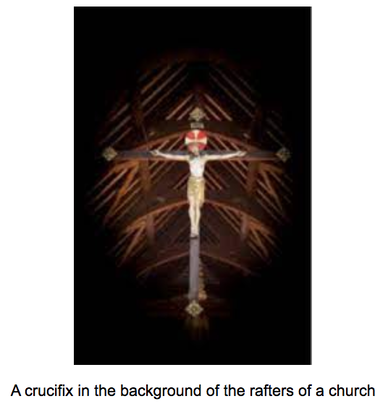









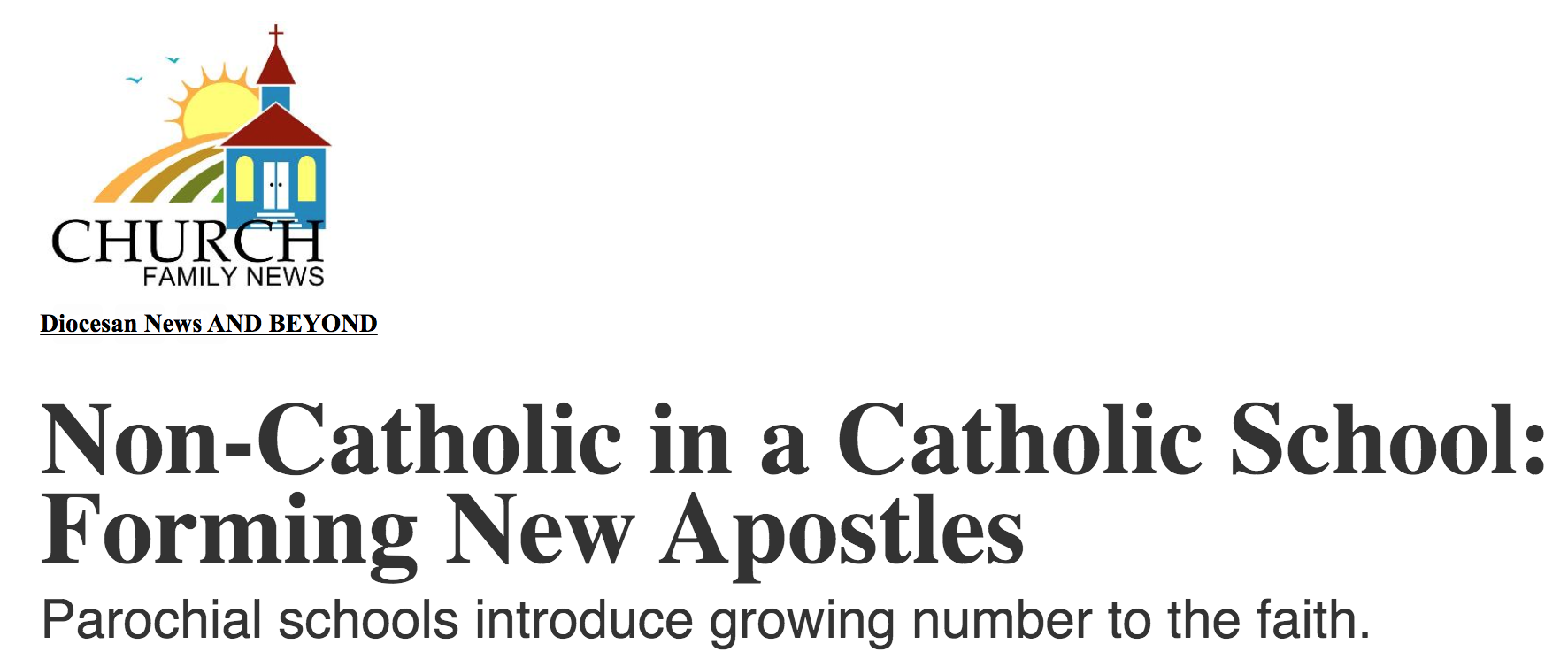






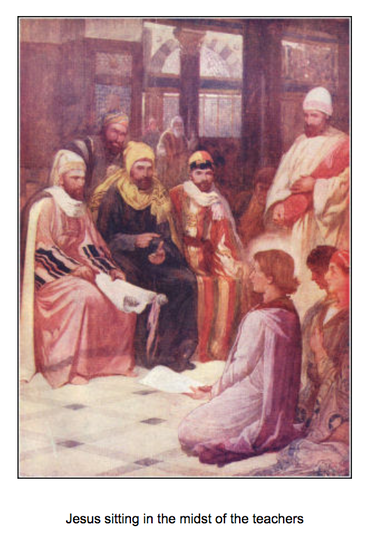

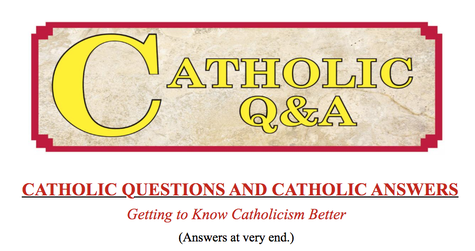







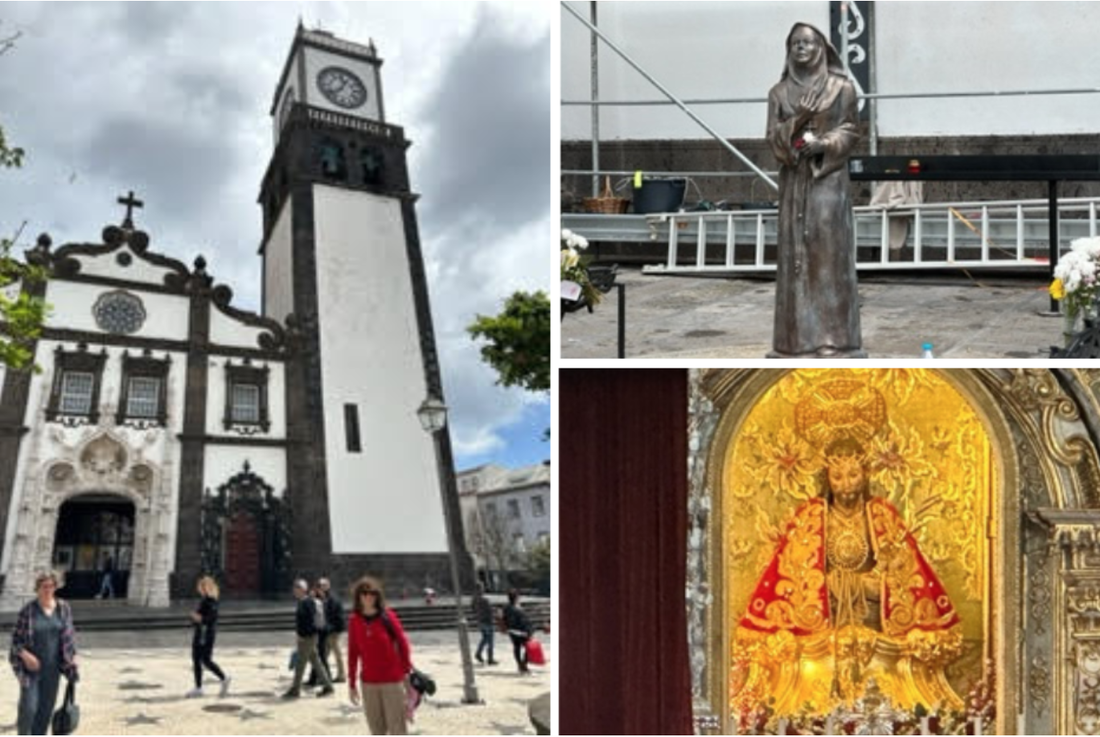
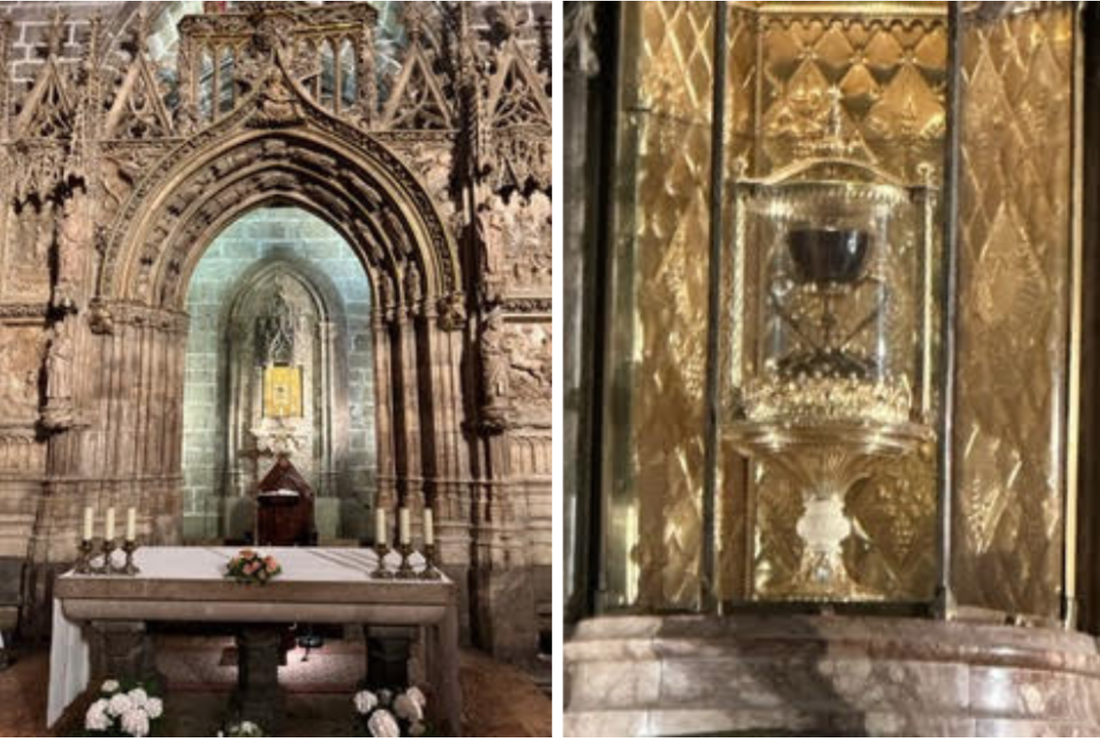

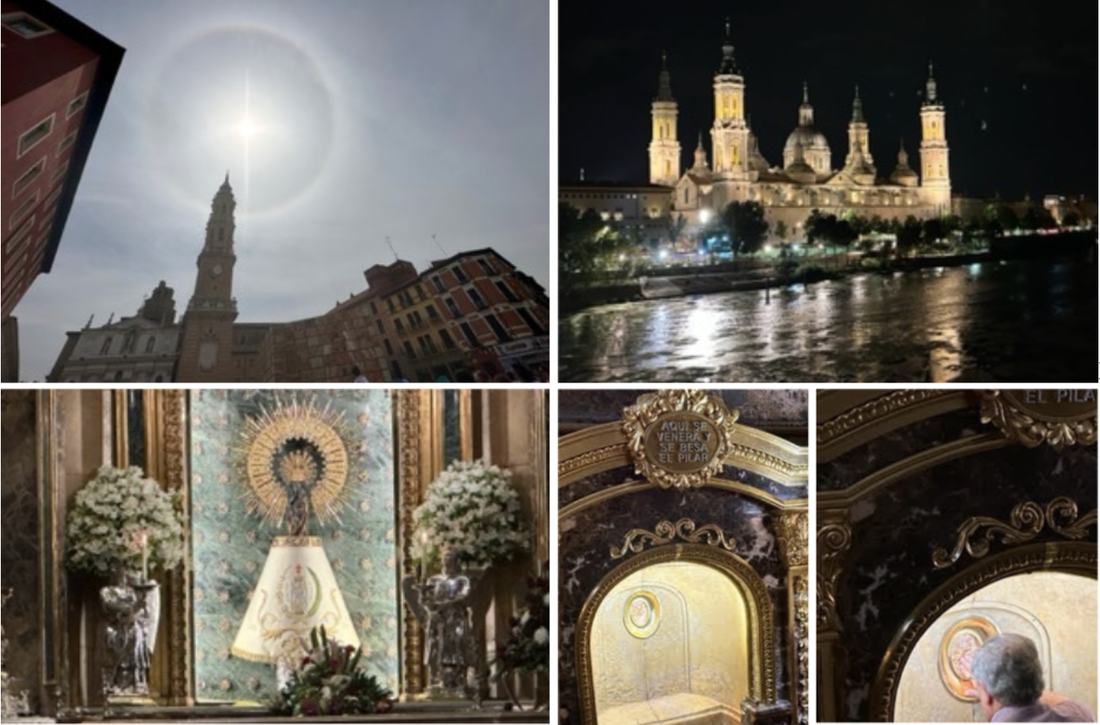


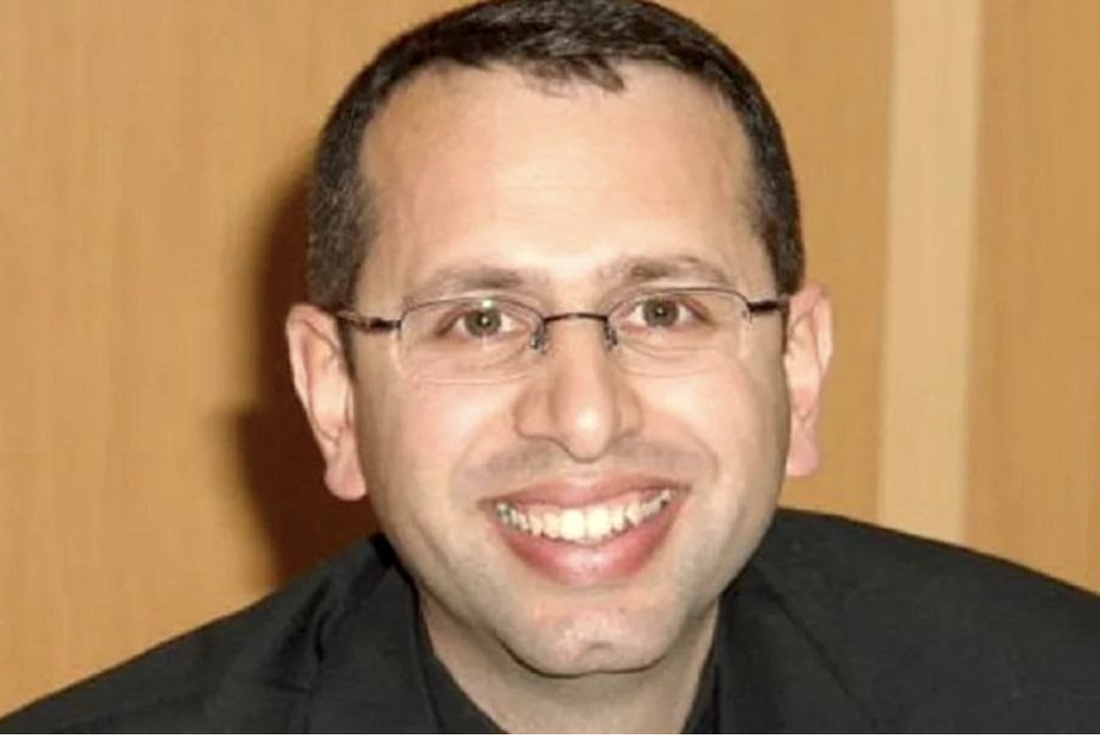











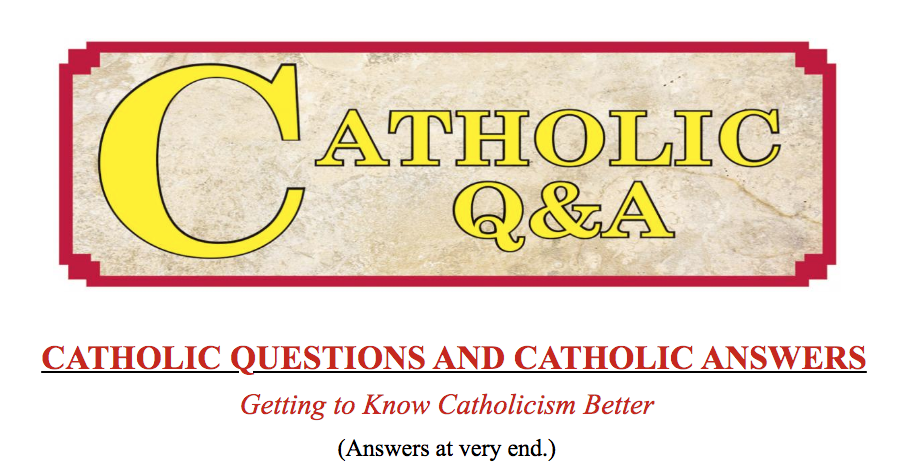

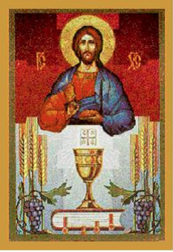




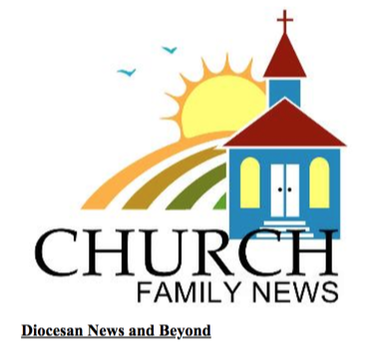










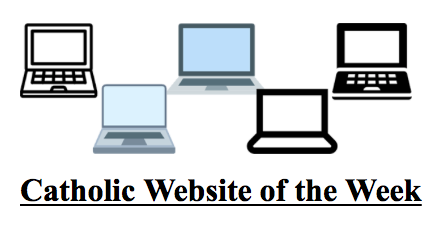

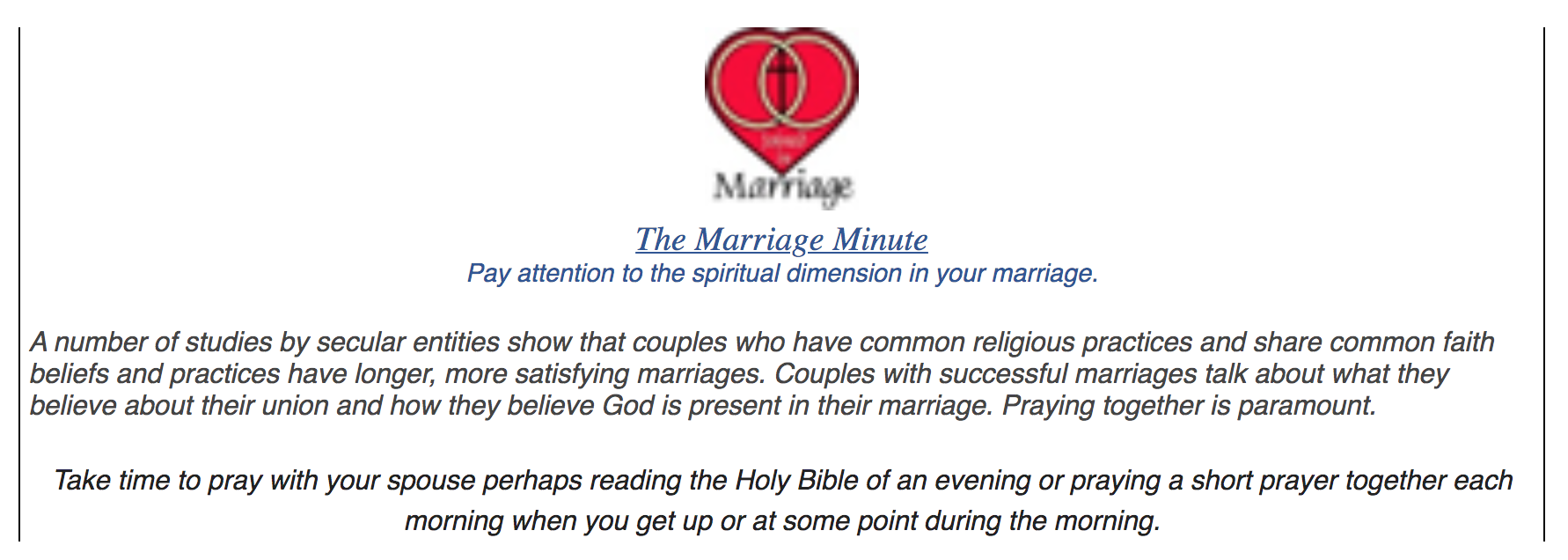
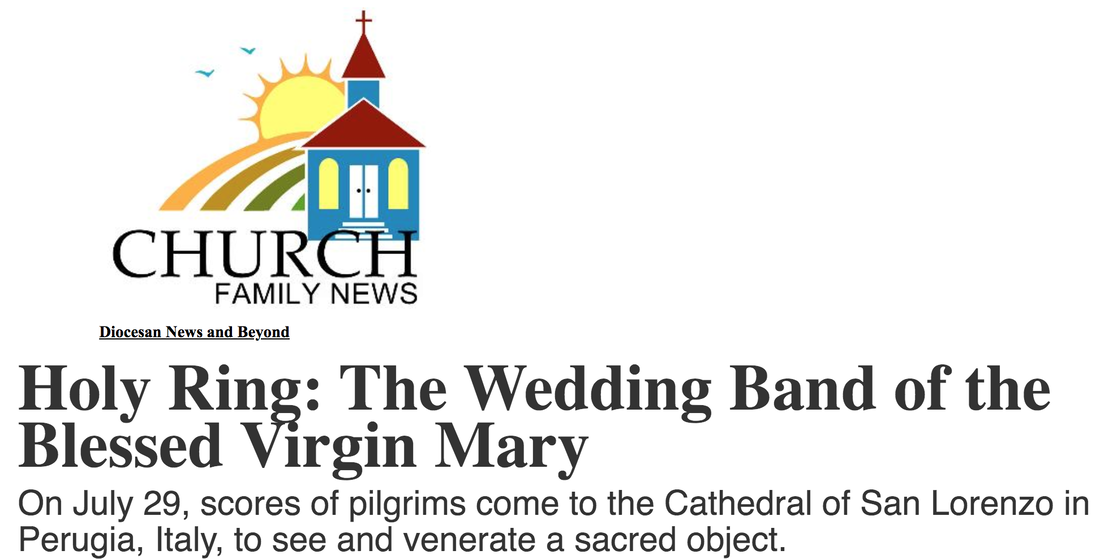




 RSS Feed
RSS Feed
